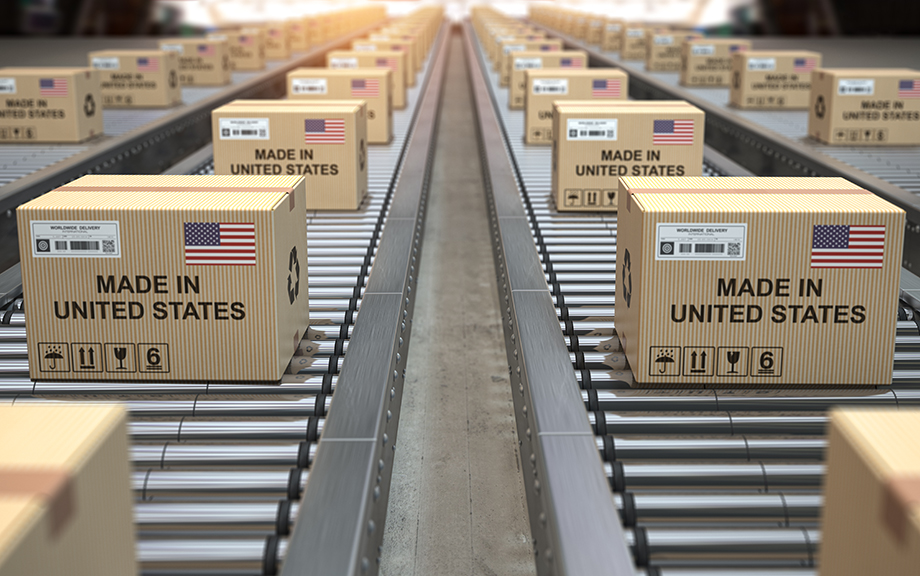Global Supply Chains and U.S. Import Price Inflation

Inflation around the world increased dramatically with the reopening of economies following COVID-19. After reaching a peak of 11 percent in the second quarter of 2021, world trade prices dropped by more than five percentage points by the middle of 2023. U.S. import prices followed a similar pattern, albeit with a lower peak and a deeper trough. In a new study, we investigate what drove these price movements by using information on the prices charged for products shipped from fifty-two exporters to fifty-two importers, comprising more than twenty-five million trade flows. We uncover several patterns in the data: (i) From 2021:Q1 to 2022:Q2, almost all of the growth in U.S. import prices can be attributed to global factors, that is, trends present in most countries; (ii) at the end of 2022, U.S. import price inflation started to be driven by U.S. demand factors; (iii) in 2023, foreign suppliers to the U.S. market caught up with demand and account for the decline in import price inflation, with a significant role played by China.
Will the U.S. Dollar Continue to Dominate World Trade?

There are around 180 currencies in the world, but only a very small number of them play an outsized role in international trade, finance, and central bank foreign exchange reserves. In the modern era, the U.S. dollar has a dominant international presence, followed to a lesser extent by the euro and a handful of other currencies. Although the use of specific currencies is remarkably stable over time, with the status of dominant currencies remaining unchanged over decades, there have been decisive shifts in the international monetary system over long horizons. For example, the British pound only lost its dominant currency status in the 1930s, well after Britain stopped being the leading world economy. In a new study, we show that the currency that is used in international trade transactions is an active firm-level decision rather than something that is just fixed. This finding raises the question of what factors could augment or reduce the U.S. dollar’s dominance in world trade.
When Will U.S. Exports Take Off?

The economic recovery from the COVID-19 pandemic has been uneven across countries and sectors. While U.S. imports have rebounded to surpass their level before the collapse in 2020, U.S. exports remain far below their pre-pandemic level. This asymmetry in part reflects the different sectoral compositions of imports and exports. U.S. imports are driven by goods trade, while exports rely more heavily on services trade. A key component of services exports is foreign travel to the United States, which has dried up due to the suspension of nonessential travel imposed in March 2020. However, U.S. exports may now be at a turning point given the reopening of U.S. borders to all vaccinated travelers on November 8. We analyze the trajectory of U.S. services and how the lifting of the travel ban might contribute to the rebound of U.S. services exports.
High Import Prices along the Global Supply Chain Feed Through to U.S. Domestic Prices

The prices of U.S. imported goods, excluding fuel, have increased by 6 percent since the onset of the COVID-19 pandemic in February 2020. Around half of this increase is due to the substantial rise in the prices of imported industrial supplies, up nearly 30 percent. In this post, we consider the implications of the increase in import prices on U.S. industry inflation rates. In particular, we highlight how rising prices of imported intermediate inputs, like industrial supplies, can have amplified effects through the U.S. economy by increasing the production cost of goods that rely heavily on these inputs.
How Much Have Consumers Spent on Imports during the Pandemic?

The return of U.S. real GDP to its pre-pandemic level in the second quarter of this year was driven by consumer spending on goods. Such spending was well above its pre-pandemic path, while spending on services was well below. Despite the surge in goods spending, domestic manufacturing has increased only modestly, leaving most of the increase in demand being filled by imports. While higher imports have been a drag on growth, the size of this drag has been moderated by the value created by the domestic transportation, wholesale, and retail sectors in selling these goods. Going forward, a rebalancing of consumer spending toward services could give a lift to growth, by shifting demand toward purchases with little import content.
What Happened to the U.S. Deficit with China during the U.S.‑China Trade Conflict?

The United States’ trade deficit with China narrowed significantly following the imposition of additional tariffs on imports from China in multiple waves beginning in 2018—or at least it did based on U.S. trade data. Chinese data tell a much different story, with the bilateral deficit rising nearly to historical highs at the end of 2020. What’s going on here? We find that (as also discussed in a related note) much of the decline in the deficit recorded in U.S. data was driven by successful efforts to evade U.S. tariffs, with an estimated $10 billion loss in tariff revenues in 2020.
The Impact of Import Tariffs on U.S. Domestic Prices

The United States imposed new import tariffs on about $283 billion of U.S. imports in 2018, with rates ranging between 10 percent and 50 percent. In this post, we estimate the effect of these tariffs on the prices paid by U.S. producers and consumers. We find that the higher import tariffs had immediate impacts on U.S. domestic prices. Our results suggest that the aggregate consumer price index (CPI) is 0.3 percent higher than it would have been without the tariffs
Do Import Tariffs Help Reduce Trade Deficits?

Import tariffs are on the rise in the United States, with a long list of new tariffs imposed in the last few months—25 percent on steel imports, 10 percent on aluminum, and 25 percent on $50 billion of goods from China—and possibly more to come on China and the auto industry. One of the objectives of these new tariffs is to reduce the U.S. trade deficit, which stood at $568.4 billion in 2017 (2.9 percent of GDP). The fact that the United States imports far more than it exports is viewed by some as unfair, so the idea is to try to reduce the amount that the nation imports from the rest of the world. While more costly imports are likely to reduce the quantity and value of imports into the United States, the story does not stop there, because we cannot presume that the value of exports will remain unchanged. In this post, we argue that U.S. exports will also fall, not only because of other countries’ retaliatory tariffs on U.S. exports, but also because the costs for U.S. firms producing goods for export will rise and make U.S. exports less competitive on the world market. The end result is likely to be lower imports and lower exports, with little improvement in the trade deficit.
U.S. Exporters Could Face High Tariffs without NAFTA
The End of China’s Export Juggernaut

China has been an exporting juggernaut for decades. In the United States, this has meant a dramatic increase in China’s share of imports and a ballooning bilateral trade deficit. Gaining sales in the United States at the expense of other countries, Chinese goods rose from only 2 percent of U.S. non-oil imports in 1990 to 8 percent in 2000 and 17 percent in 2010. But these steady gains in U.S. import share have stopped in recent years, with China even losing ground to other countries in some categories of goods. One explanation for this shift is that Chinese firms now have to directly compete against manufacturers in high-skill developed countries while also fending off competition from lower-wage countries, such as Vietnam. This inability to make additional gains at the expense of other countries means that exports don’t contribute as much to China’s overall growth as they used to.















 RSS Feed
RSS Feed Follow Liberty Street Economics
Follow Liberty Street Economics